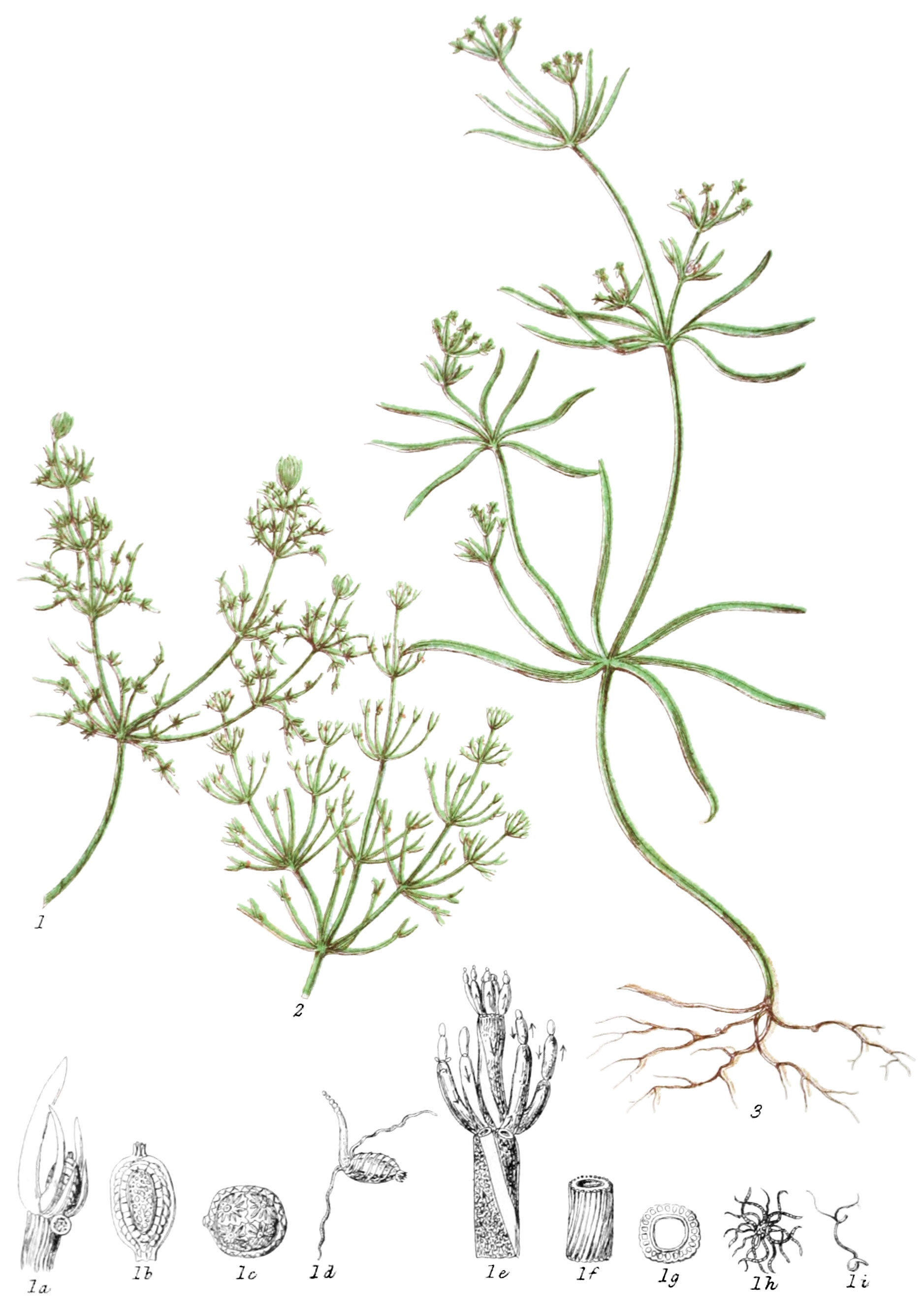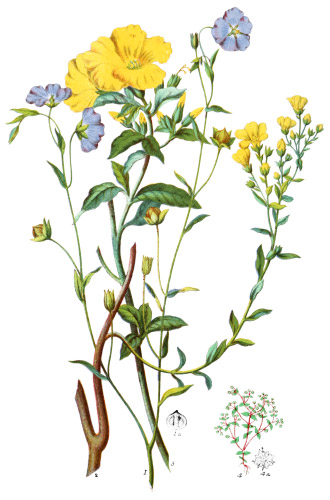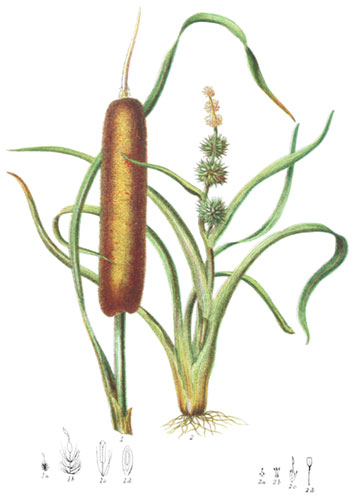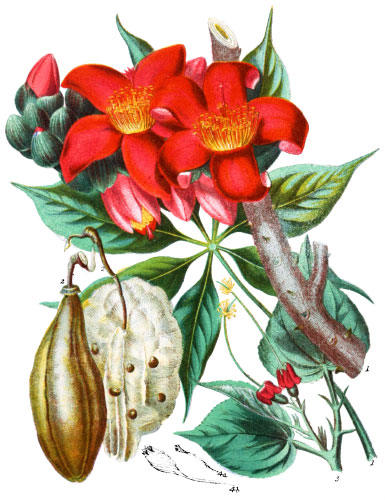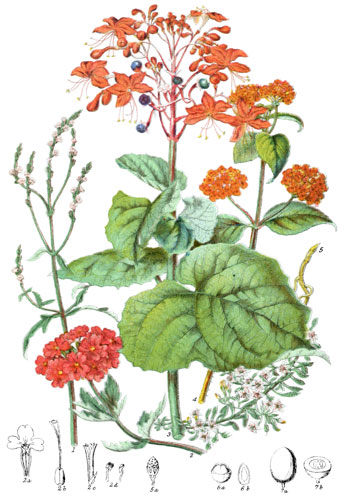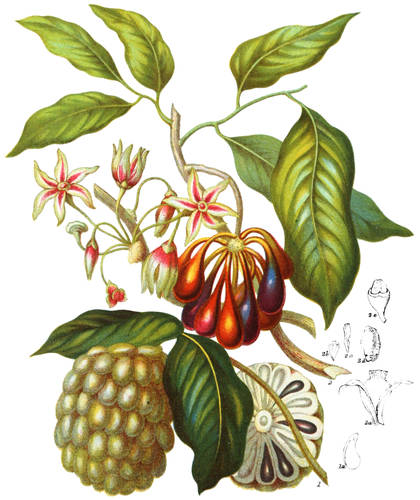Key characteristics
Aquatic plants, of brittle nature, always submersed, growing in stagnant or salt water, with a stem composed of parallel tubes which are either transparent or encrusted, having regular whorls of symmetrical or tubular branches. The reproductive organs are round, succulent, red globules, placed below the whorls of branches, and oval bodies above the leaf or branch; the outer covering of the upper capsule is transparent, and terminates in five teeth at the top; the inner portion is hard and dry, composed of five narrow valves, filled with granules of starch. The small red globule is formed of several scales, which separate and cuase it to open when ripe; the interior is filled with a mass of elastic, transversely-waved filaments.
This Tibe has affinity with Naiadaceæ, and in some points of structure with Sea-weeds.
The stems of Chara secrete lime.
Select plants in this order
Not all plants listed are illustrated and not all plants illustrated are listed.
- These plants, of apparently insignificant rank in the vegetable kingdom, and of no known use, possess neverthe less considerable interest, in both their past and present history. It is a tribe of comparatively recent date, no vestige of it being discovered in the earliest series of rocks. Ferns and Palms were created before Chara was called into existence; in the lower fresh-water formation are first found the fossil relics of Gyrogonites, a giant representative of these aquatics, in a period when vegetation began to acquire some of the forms which exist at the present time in living plants. The true species of Chara are remarkable for the large portion of carbonate or phosphate of lime which they contain, acquiring for them the name of stone-worts; in some instances so abundant is the lime, that the whole form of the plant remains perfect after the organic membranes have been removed. In fens they add yearly earthly deposits whih tend to the elevation of the soil. The odour arising from the in low marshy ground is very unpleasant, and is said to be one of the causes of unhealthiness of the Campagna of Rome.
- Chara vulgaris (1) is very common in muddy, stagnant ditches throughout England, and other countries of Europe; the root is fixed in the mud, the plant growing up to the surface, but never rising above it; the scent is very nauseous.
- Nitella is chiefly distinguished as a genus by the want of any secretion of lime, and the stem being composed of a simple tube, not spirally striated.
- N. flexilis (2) is quite smooth, without any small prickles; found in several parts of the country in ditches and ponds: the slender branches are either undivided, forked, or three-cleft.
- N. translucens (3)* is our largest species, found only rarely in pools in Scotland; the root is creeping, of many-branching slener fibres, with small knots.
- N. gracilis is the slender species occasionally seen in bogs.
- Autralia affords several examples of this tribe, and in this instance the same law prevails as in other and higher branches of creation; those species which are the most prevalent in the rest of the world are the least represented, or scarcely seen in Australia.
- Of Nitella twelve species have been discovered; N. microphylla is of very delicate growth and texture, with transparent stems.
- N. gleostachys of the Swan River has the spikes surrounded by a glossy, pellucid jelly, giving it a beautiful iridescent appearance.
- N. subtilissima is nearly the smallest species of the tribe.
- N. antarctica closely resembles N. nidifica, an inhabitant of salt water in the north of Europe, and peculiarly found in the shallow borders of the Baltic.
Many curious observations have been made at different times on the circulation of the fluid in the stems of these plants. Corti, of Lucca, first observed it in 1774. Treviranus continued the examination in 1817, but it was not generally known to be perceptible to any observer with a good microscope, until Amici made more extended researches at Modena. Since then, English and French botanists have confirmed the fact as an undoubted addition to our knowledge of the physiology of plants. Another interesting observation on this tribe is, that on the phytozoa contained in the cells of the filaments in the globule are two vibratile cilia, which possess spontaneous movement, and thus appear to connect this lowly tribe of plants with the lowest among animals.
Locations
This Tribe is found in stagnant water, either fresh or salt, sometimes in rivers, always submerged; most abundant in Temperate countries, but growing in almost every part of Europe, Asia, Africa, America, and Australia.
Legend
- Chara vulgaris. Common Chara. Ponds, England.
- Branch, with fructification.
- Upper capsule.
- Globule.
- Capsule, sprouting.
- Motion of fluid within each joint.
- Stem.
- Section.
- Filaments of globule.
- Phytozoom of filament. All highly magnified.
- Nitella flexilis, Smooth Nitella. Ponds and rivulets, England.
- Nitella translucens, Great transparent Nitella. Pools, England.
*N. translucens was spelled “M. translucens” in the original description.
Explore more
Posters
Decorate your walls with colorful detailed posters based on Elizabeth Twining’s beautiful two-volume set from 1868.
Puzzles
Challenge yourself or someone else to assemble a puzzle of all 160 botanical illustrations.
